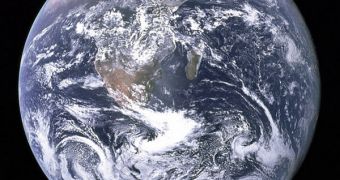Scientists have shown in a newly-published paper that the rare Earth theory, stating that life only exists on our planet, is narrowly-focused, misleading, and ignorant of a number of facts. The experts add that, in all likelihood, life abounds in the Cosmos.
Howard Alan Smith, PhD, a senior astrophysicist at the Harvard-Smithsonian Center for Astrophysics (CfA), is one of the main proponents of rare Earth, and he bases most of his arguments on studies of the 500+ exoplanets that have been discovered until now.
He and other scientists say that none of these worlds have ever turned out to be even remotely similar to Earth. Exoplanets are very different from our own world, orbiting too far or too close to their stars, being blasted by radiation, or slowly falling into the celestial fireballs around which they revolve.
“We have found that most other planets and solar systems are wildly different from our own. They are very hostile to life as we know it. Extrasolar systems are far more diverse than we expected, and that means very few are likely to support life,” the CfA expert argues.
“Any hope of contact has to be limited to a relatively tiny bubble of space around the Earth, stretching perhaps 1,250 light-years out from our planet, where aliens might be able to pick up our signals or send us their own. But communicating would still take decades or centuries,” he goes on to say.
But experts agree that Smith and other scientists arguing for this point of view, is wrong. The rare Earth theory disregards a large number of scientific facts, while putting too much emphasis on others.
First and foremost, the Universe is huge, and we only know 500 of its exoplanets. There are literally trillions upon trillions of stars out there, of which the vast majority could support exoplanets in orbit.
Our galaxy alone contains anywhere between 200 and 400 billion stars. The more places that could have stars, the weaker the argument that a second Earth does not exist because we haven't detected it yet.
University of Washington geologist Peter Ward and astrobiologist Donald Brownlee, also at the university, put together a list of essential points that exoplanets need to meet in order to be qualified as life-friendly, if you will.
An potential second Earth needs to be within its star's habitable zone, have water underneath its surface, not be tidally locked with the star, not be exposed to too much radiation, have a stable orbit, and the right mass to allow it to hold on to an atmosphere.
Preferably, it must also have an active core and plate tectonics, as well as a gas giant for a neighbor, that would clear its orbit of debris. A moon for orbital tilt stabilization would also be “appreciated.”
Rare Earth proponents may be right that such a world has not been discovered yet. However, by this December, the NASA Kepler telescope would have validated an additional 500 exoplanets at least, not to mention the discoveries of other telescopes.
To pretend that none of these exoplanets resembles Earth is literally burying your head in the sand. Undoubtedly, future studies will prove rare Earth deniers correct, Daily Galaxy reports.

 14 DAY TRIAL //
14 DAY TRIAL //